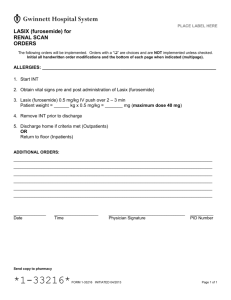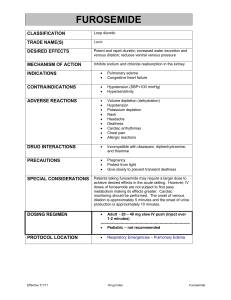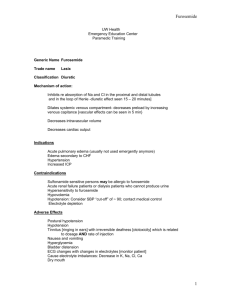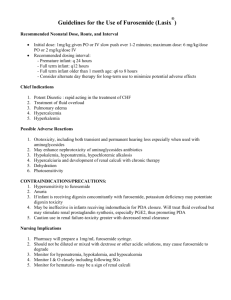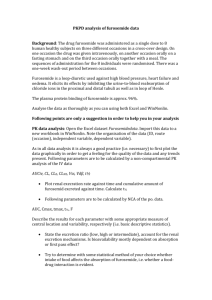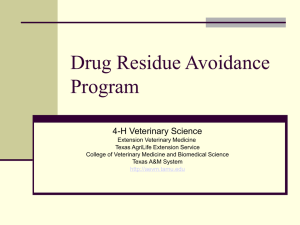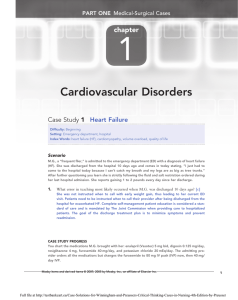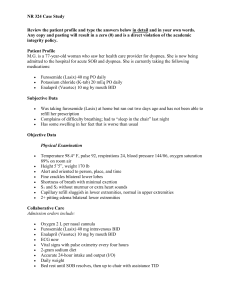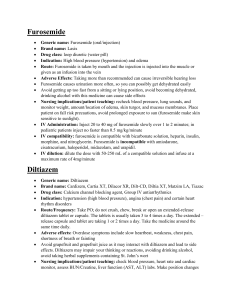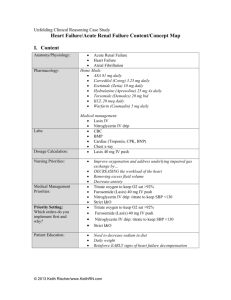Med 14
advertisement
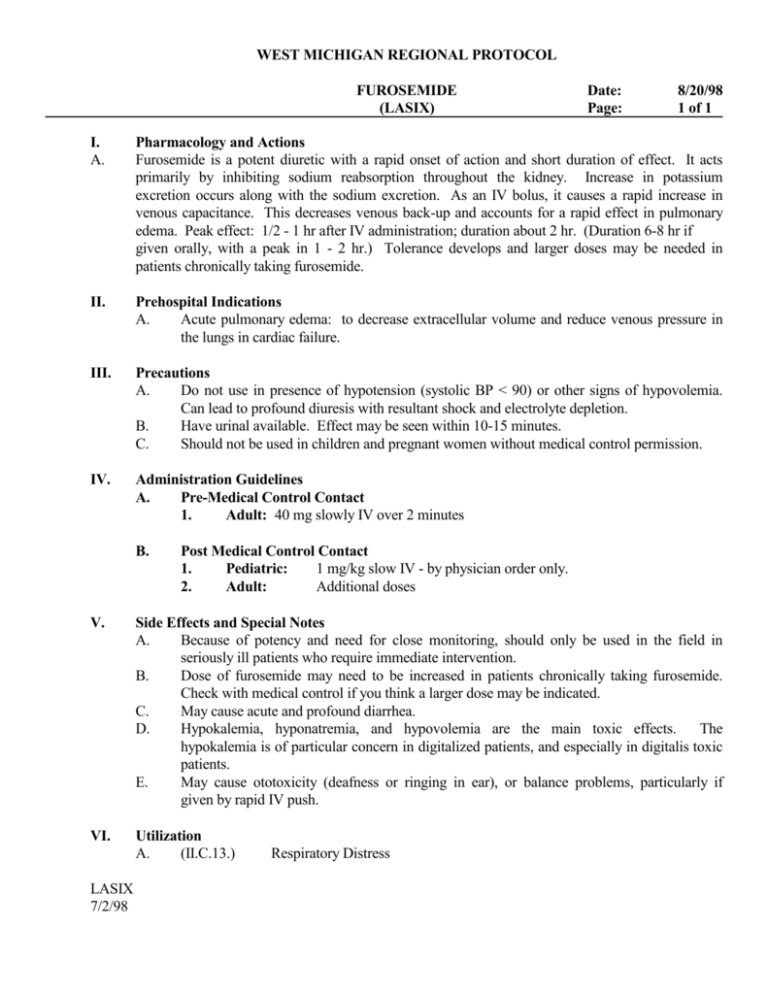
WEST MICHIGAN REGIONAL PROTOCOL FUROSEMIDE (LASIX) Date: Page: 8/20/98 1 of 1 I. A. Pharmacology and Actions Furosemide is a potent diuretic with a rapid onset of action and short duration of effect. It acts primarily by inhibiting sodium reabsorption throughout the kidney. Increase in potassium excretion occurs along with the sodium excretion. As an IV bolus, it causes a rapid increase in venous capacitance. This decreases venous back-up and accounts for a rapid effect in pulmonary edema. Peak effect: 1/2 - 1 hr after IV administration; duration about 2 hr. (Duration 6-8 hr if given orally, with a peak in 1 - 2 hr.) Tolerance develops and larger doses may be needed in patients chronically taking furosemide. II. Prehospital Indications A. Acute pulmonary edema: to decrease extracellular volume and reduce venous pressure in the lungs in cardiac failure. III. Precautions A. Do not use in presence of hypotension (systolic BP < 90) or other signs of hypovolemia. Can lead to profound diuresis with resultant shock and electrolyte depletion. B. Have urinal available. Effect may be seen within 10-15 minutes. C. Should not be used in children and pregnant women without medical control permission. IV. Administration Guidelines A. Pre-Medical Control Contact 1. Adult: 40 mg slowly IV over 2 minutes B. Post Medical Control Contact 1. Pediatric: 1 mg/kg slow IV - by physician order only. 2. Adult: Additional doses V. Side Effects and Special Notes A. Because of potency and need for close monitoring, should only be used in the field in seriously ill patients who require immediate intervention. B. Dose of furosemide may need to be increased in patients chronically taking furosemide. Check with medical control if you think a larger dose may be indicated. C. May cause acute and profound diarrhea. D. Hypokalemia, hyponatremia, and hypovolemia are the main toxic effects. The hypokalemia is of particular concern in digitalized patients, and especially in digitalis toxic patients. E. May cause ototoxicity (deafness or ringing in ear), or balance problems, particularly if given by rapid IV push. VI. Utilization A. (II.C.13.) LASIX 7/2/98 Respiratory Distress
